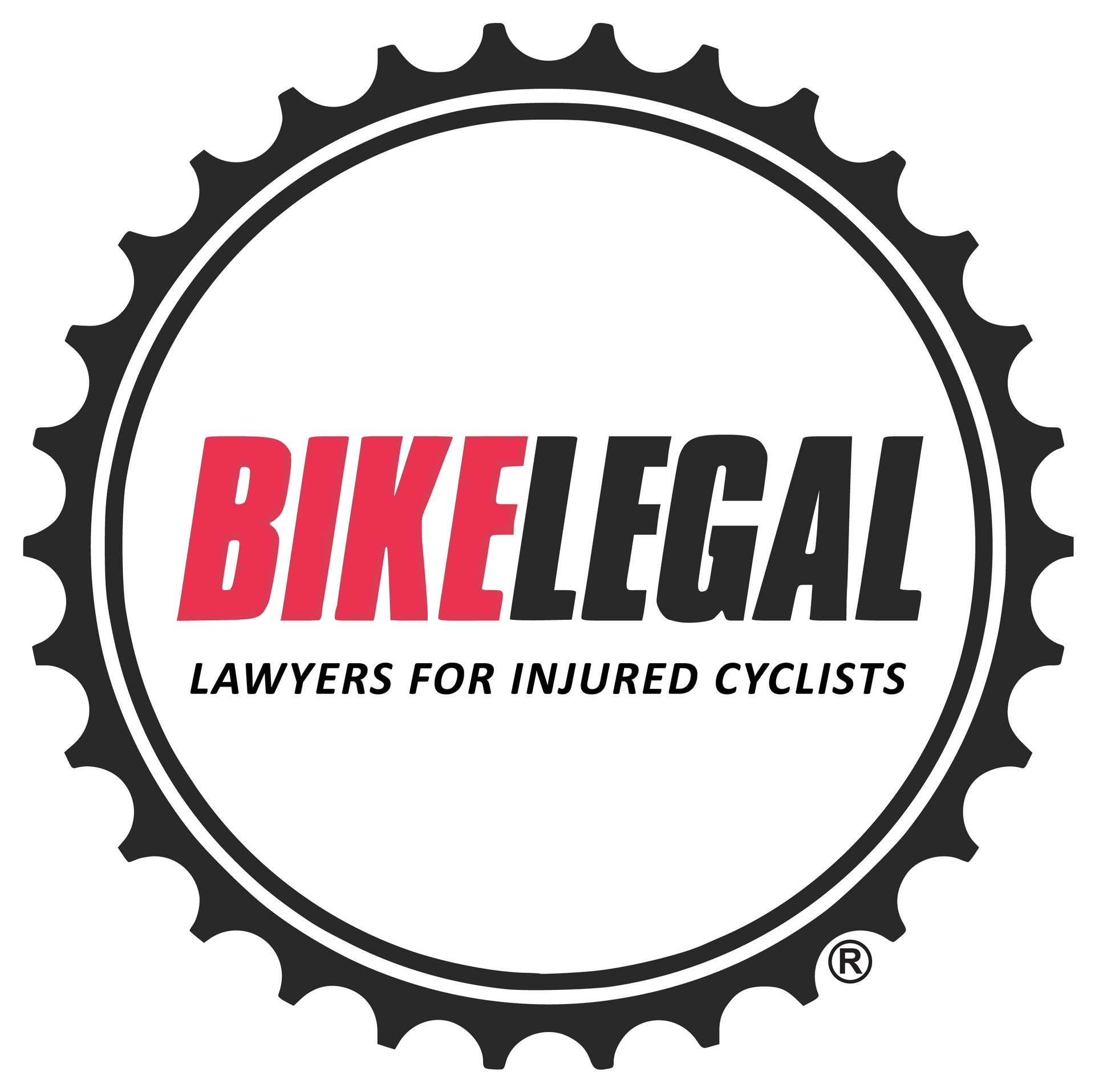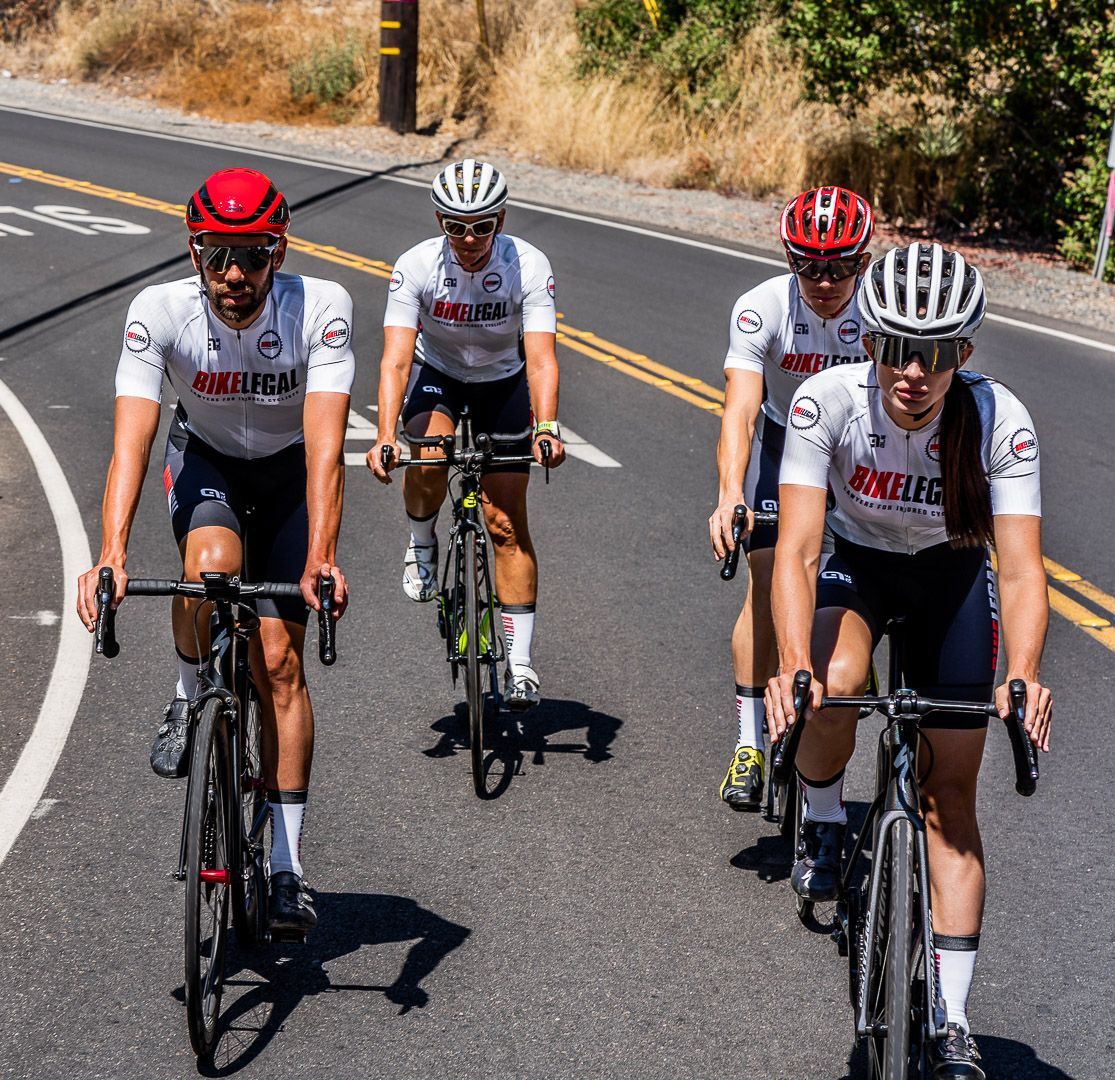The Bicycle Lane Debate: Should Motorists Share the Road?
Follow us on
social media!
Motorist Vs. Cyclist: The Battle Over Precious Road Space
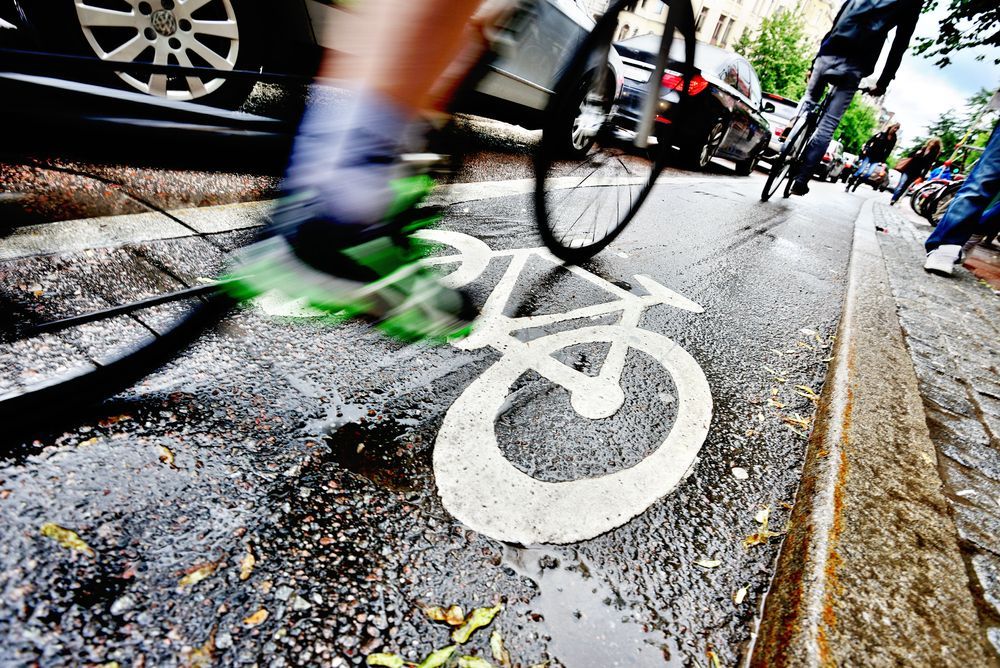
The bicycle lane debate has been ongoing for what seems like an eternity. Opinions clash on whether to expand bicycle lanes for cyclists or prioritize roads for motor vehicles. However, the ultimate goal remains the same: to ensure the safety of all who share our roads, whether they are on two wheels or four. Let's delve into this ongoing issue by reviewing both perspectives and exploring potential solutions.
In this article, we'll discuss:
- The ongoing bicycle lane debate.
- Perspectives from cyclists, drivers, city planners, and lawmakers.
- Exploring win-win scenarios for road harmony.
The Motorists vs. Cyclists Debate
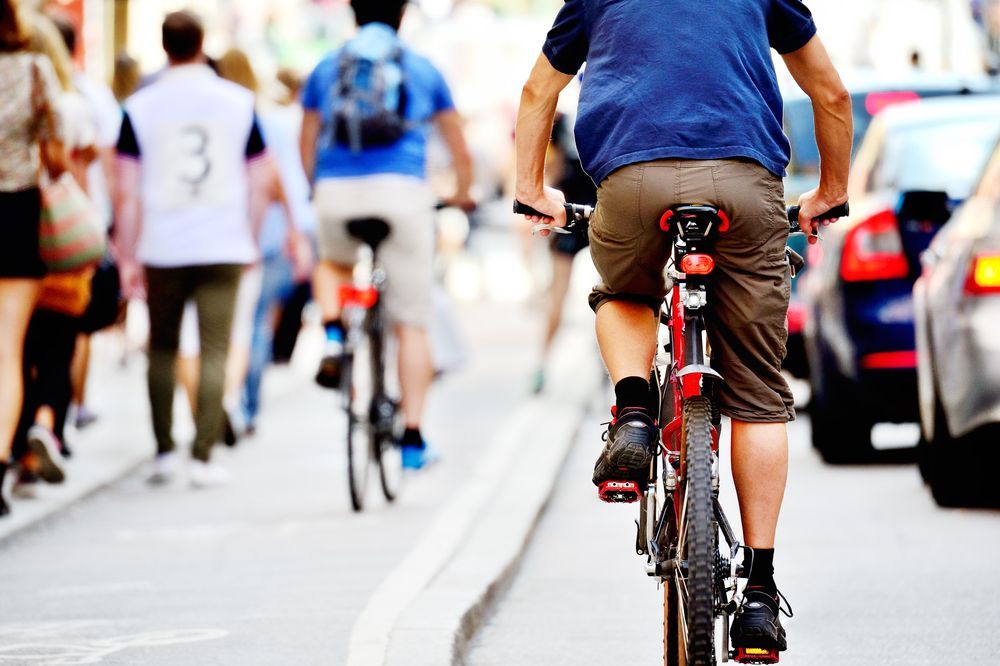
Cyclists argue that expanding bike lanes and protecting the cycling infrastructure is essential for promoting safety and encouraging more people to ride. With a protected bike lane, bicycle riders feel safer and more confident navigating city streets, reducing the risk of accidents and collisions with motor vehicles.
However, many motorists push back against the idea of sharing the road with cyclists. They argue that roads are primarily designed for cars and trucks. Hence, accommodating cyclists leads to congestion and dangerous traffic situations.
In major urban centers like New York City, where securing a parking spot is notoriously difficult, there's growing discontent among residents over the conversion of parking areas into protected bicycle lanes under the Vision Zero initiative.
One thing is clear: finding a balance between the needs of cyclists and motorists is challenging, yet vital for state legislature, city officials, and residents.
What Are the Different Types of Bike Lanes
(Bicycle Travel Ways)?
People ride bicycles in many areas including densely populated cities, rural areas, and everything in between. People also choose to ride bikes for many reasons. Some commute to work, some are bike delivery/messengers, others ride for recreation, and some are elite racers training for their next event. The one thing they all have in common is sharing the road with motorists.
In this section, we will break down the different types of bicycle travel ways (bicycle lanes) beginning with the most dangerous to the safest:
No Bicycle Lane and No Shoulder:
This is common on many rural roads where cyclists must use the same lane as motorists. This is also the most dangerous scenario as there is no space for a vehicle and bicycle to share the road.
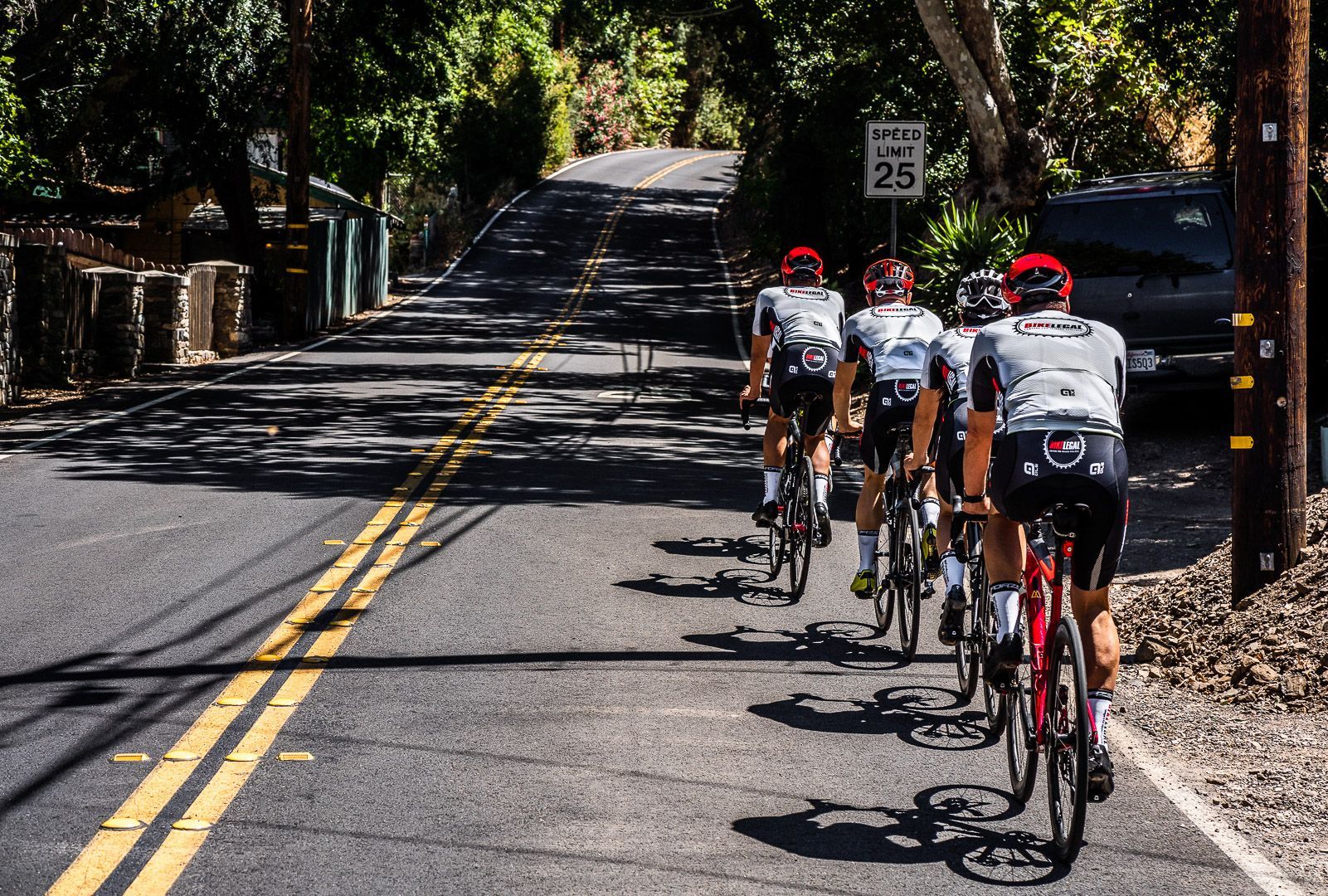
No Bicycle Lane (Shoulder Only):
A road with no specific bike lane. Here, you've got what's called the shoulder of the road. It's not specifically designed for bikes, but it's often where cyclists ride. This space can vary in width and surface quality. An article from KTLA mentions that
85% of bicycle fatalities in Los Angeles occurred where no bike lanes were present. No bike lanes are like the Wild West of biking – you must be extra cautious, especially around traffic. Below is a narrow strip of highway where a serious crash occurred in December 2023 in Palm Beach County, Florida (no bike lane, surprise surprise).
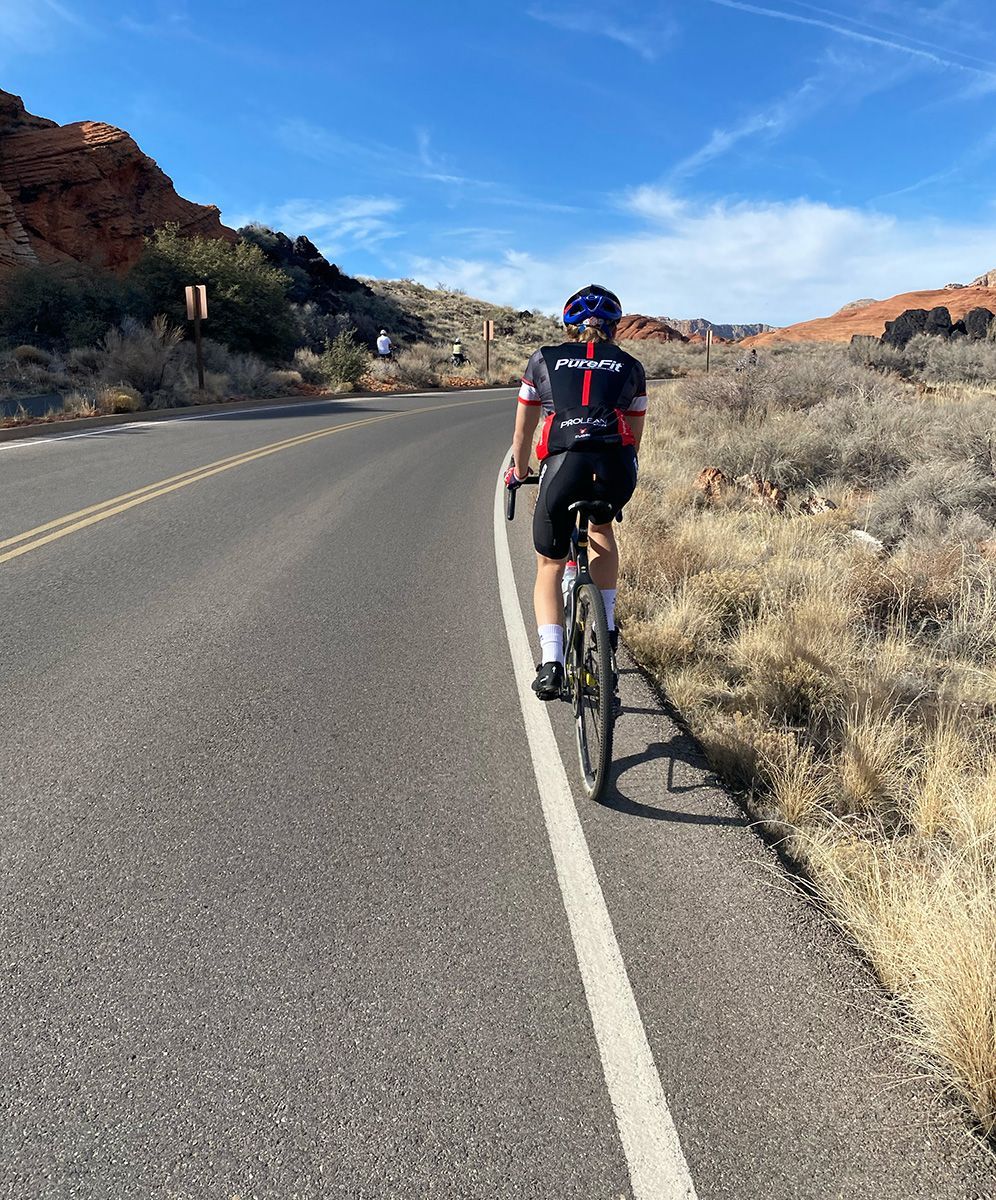
Bicycle Lane:
This is your standard bike lane, a painted marked path on the road just for cyclists. These lanes are usually on the right side of the road and are marked with bicycle symbols. It's like having a lane on the highway but for your bike - but that doesn't necessarily mean cyclists feel safe. There is also the risk of "Dooring" where a parked car can suddenly open a door and into an approaching cyclist.
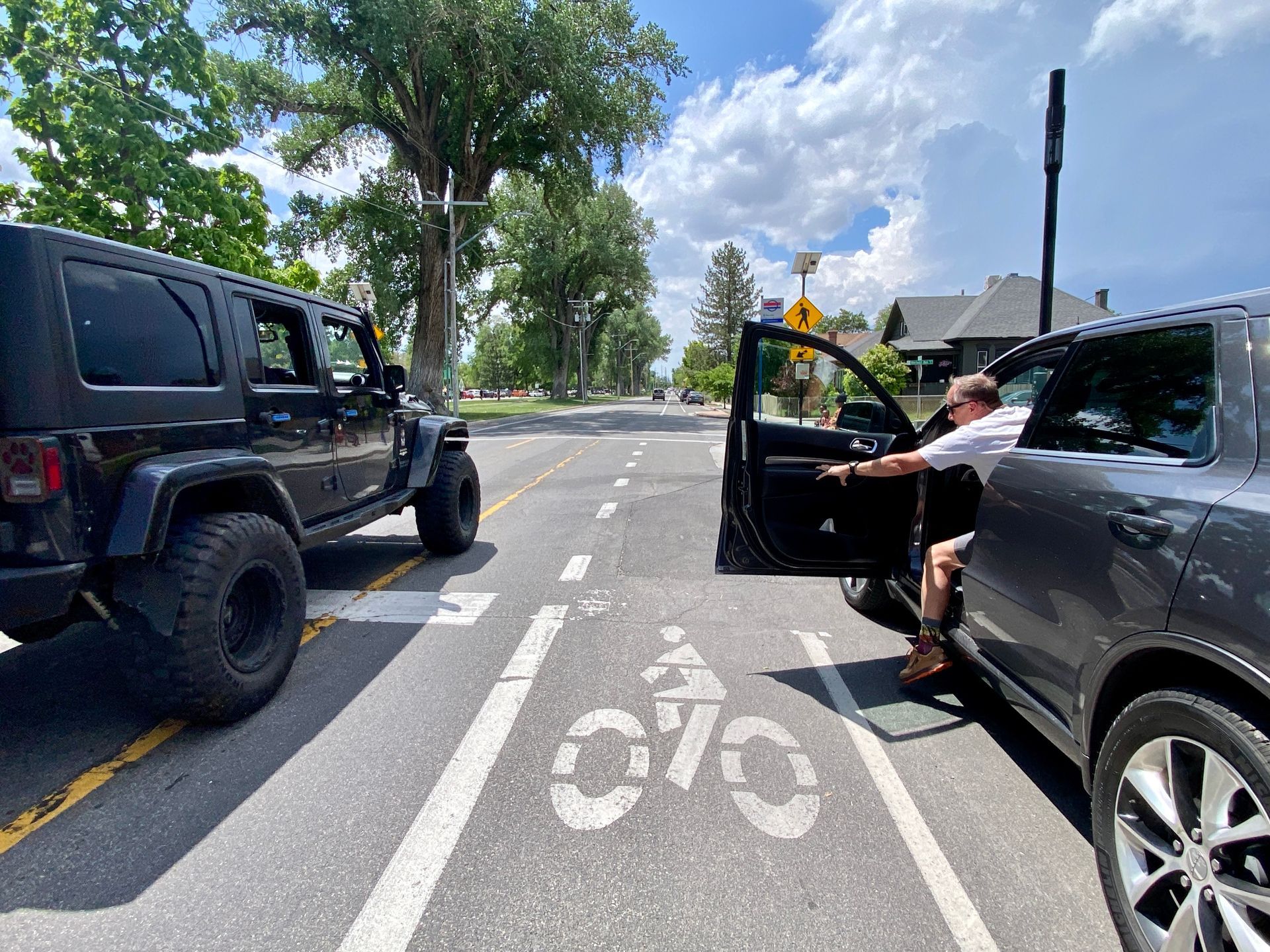
In one Reddit post, a user shared her opinion that "bike lanes are dangerous and stupid", because of the risk of a distracted driver still "swerving" onto the lane. She further went on to say: "I have no problem with bike PATHS, I have a problem with bike LANES that are directly on the road. Both bikers and drivers need their own space and both have idiotic users."
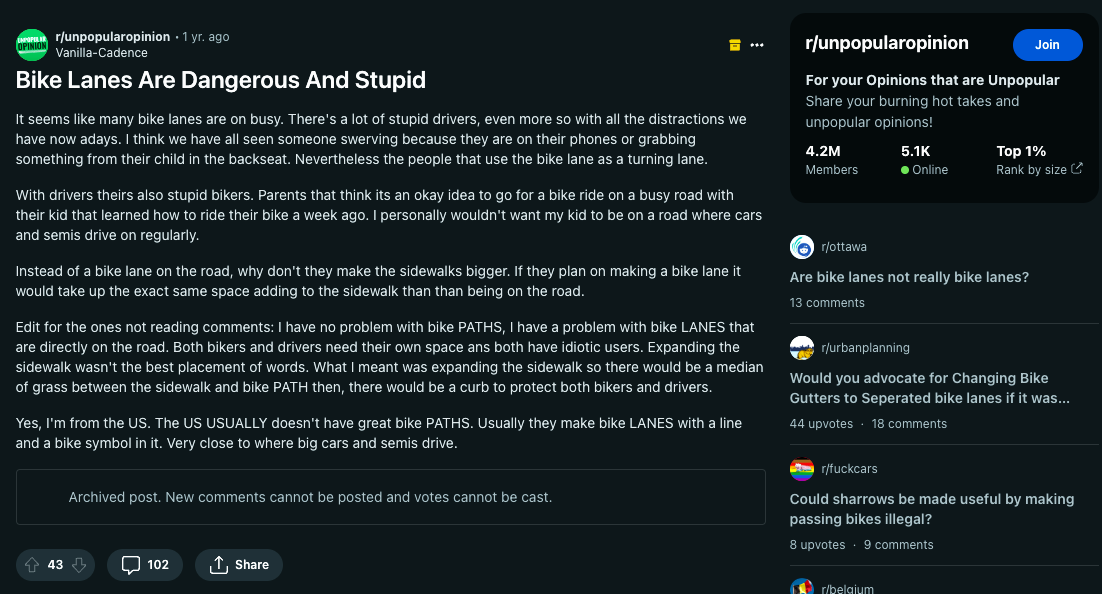
This is the reason why we have wider or protected bike lanes, which we'll be talking about next.
Bicycle Lane with Added 3' Space/Marking:
Now, imagine your regular bike lane, but with a bonus – an extra 3 feet of space! This buffer zone is marked out and gives you more room to ride without feeling squeezed by passing cars.
According to the Federal Highway Administration, separated bicycle lanes, which provide additional space and physical separation from motorized traffic, indeed offer safety benefits for cyclists.
In New York City, wider bike lanes on Third Avenue have been designed to accommodate record-breaking bike ridership and create a more comfortable cycling experience.
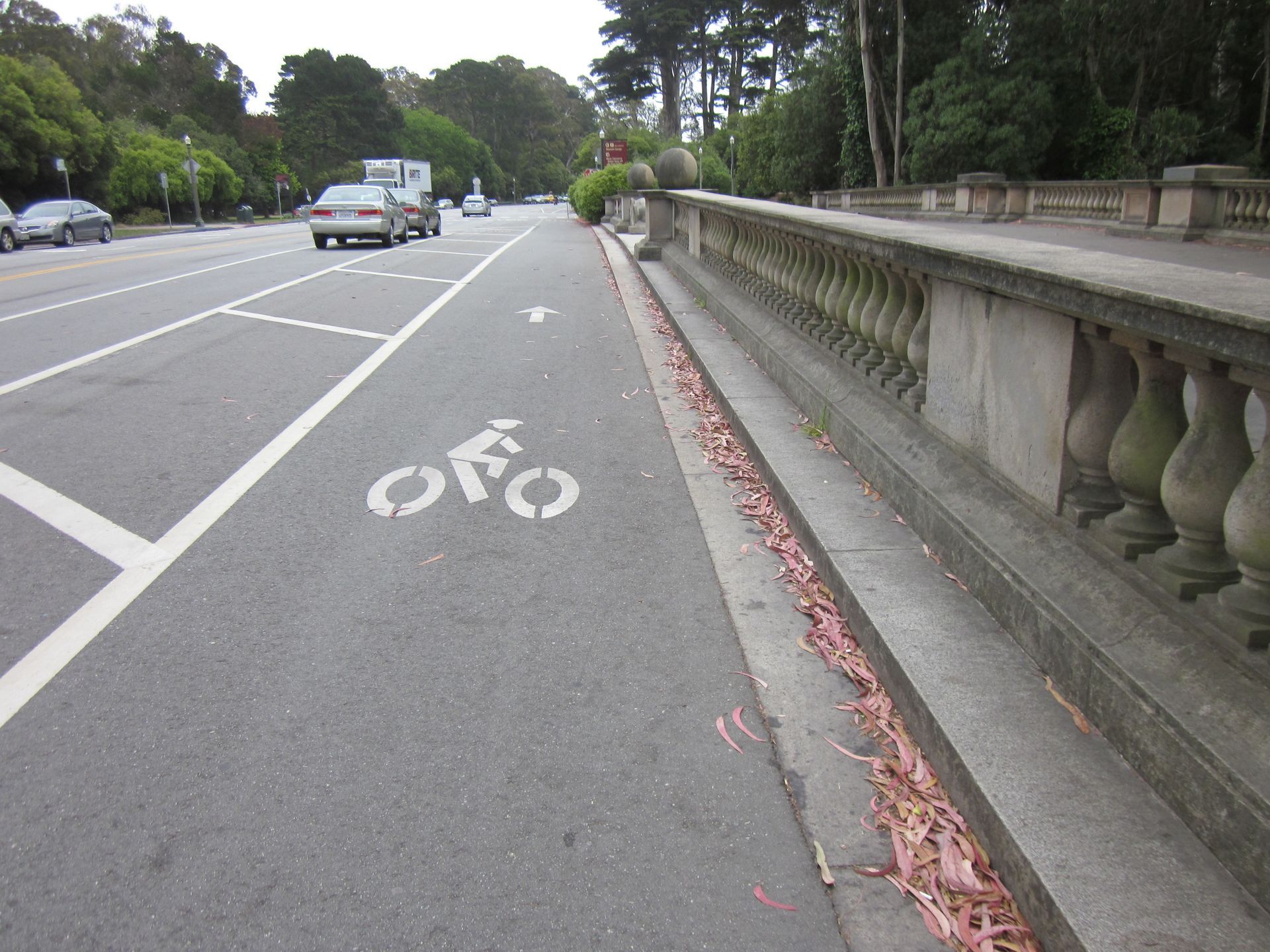
Protected Bike Lanes:
These are the VIP sections of bike lanes. Protected lanes are separated from motor vehicle traffic by barriers like curbs, landscaping, posts, or parked cars.
Protected bike lanes have been shown to increase bike traffic. Montreal, for example, saw a 61% increase compared to roads with no such bicycle infrastructure.
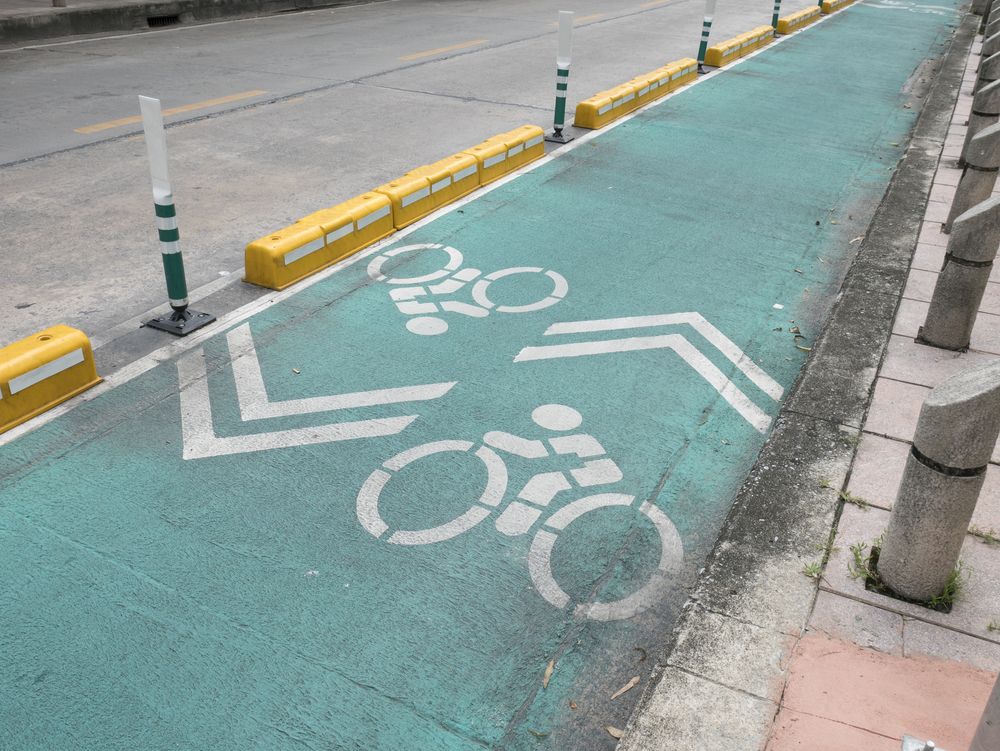
Multi-Use Paved Paths (Not Part of the Road):
These multi-use paths are separate from the roadway and are intended for all non-motorized users such as pedestrians, joggers, rollerbladers, scooters, and families. Motorists often wonder why cyclists don't use bike paths as they appear to be the safest option.
These shared use paths are open to many types of users traveling at a wide variety of speeds which creates safety concerns. Additionally, pets and young children are unpredictable and can quickly find themselves in the path of a fast-moving cyclist or e-bike resulting in a collision. Therefore, many cyclists find the road to be a safer option as they are traveling in the same direction and often at closer speeds to more predictable traffic.
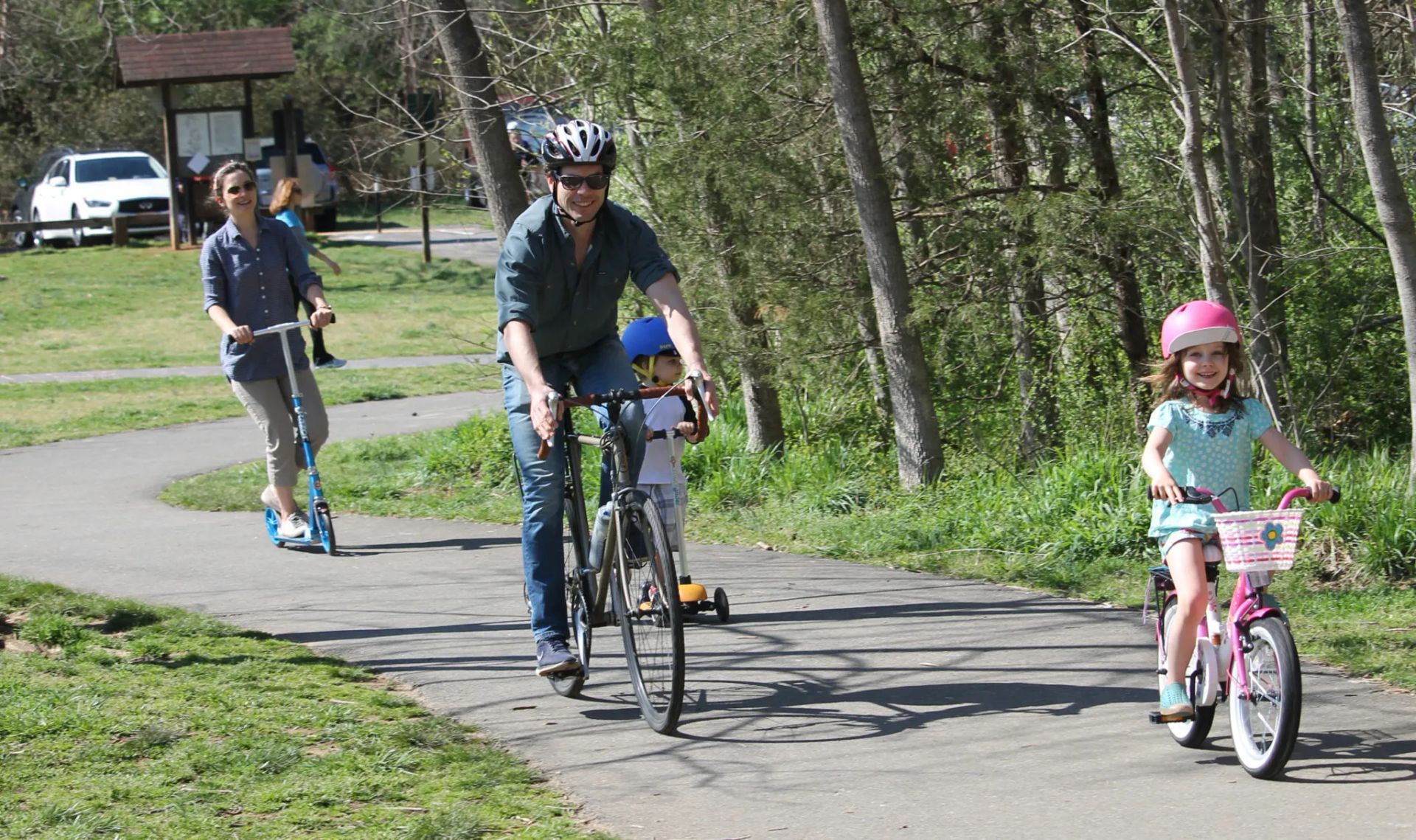
Bike Lane Pros: A Cyclists Point of View
Bicycle Proponents argue in favor of safe cycling infrastructure. Some of the most common
pro arguments are:
- Safety: The presence of bike lanes significantly reduces the risk of dangerous accidents between vehicles and bicycles. Cyclists are afforded a designated space that is marked, making them more visible to motorists and reducing the likelihood of collisions.
- Encourages Cycling: Separated Bike lanes encourage people to choose cycling as a means of transportation. With dedicated lanes, officials foresee increased participation in active transportation and reduced reliance on cars, promoting environmental sustainability and reducing traffic congestion.
- Health Benefits: Separated bike lanes encourage cycling as a form of exercise, promoting better health and wellness. With a safe and designated place to ride, more individuals are likely to choose biking over driving, contributing to improved cardiovascular health and decreased obesity rates.
- Economic Benefits: Cyclists argue that they save money on fuel and maintenance costs associated with motor vehicles. Additionally, cities may experience economic benefits from reduced road maintenance costs due to lighter traffic and less wear and tear. For example, Bogota's population saw a whopping 80 million USD saved per year, all while preventing 300 deaths annually, from investing in extensive cycling infrastructure.
- Social Equity: Bike paths can offer a form of social equity by providing a low-cost transportation route for those who cannot afford a car or choose not to own one. This opens up opportunities for all residents to access city amenities and employment.
While dedicated bike lanes significantly reduce the risk of accidents, it's important to acknowledge that collisions can still happen. In the unfortunate event of a bicycle accident,
head to Bike Legal for free expert legal advice.
Bike Lane Cons: The Opposed Point of View
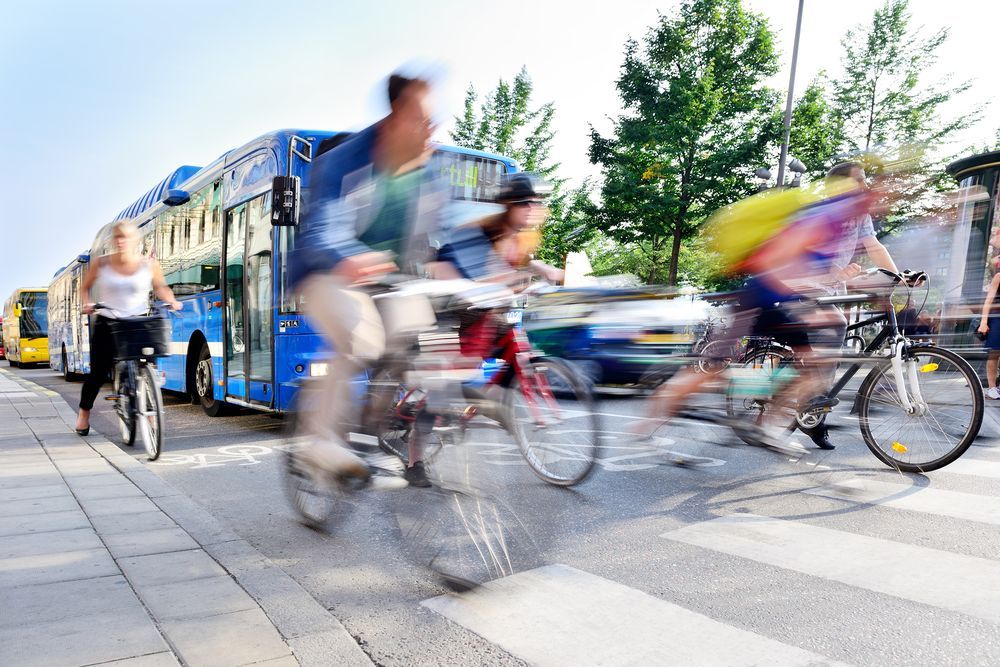
The intention behind protected bike lanes is to promote cycling as a safe and sustainable mode of transport. The concerns raised by critics focus on the potential drawbacks for traffic flow, local businesses, city finances, and the practicality of these lanes in everyday urban life.
Here are some of the other opposed perspectives that this group brings forth:
Impact on Traffic:
Many Motorists oppose the bike travel lane due to concerns about congestion and the impact on motor vehicle traffic flow. They argue that dedicating space to cyclists may lead to longer commute times for motorists, particularly in cities with limited road space or parking spaces.
A counter-point on "congestion":
- Studies like one by the Greater London Authority show that bike lanes moved 5x as many people per hour as car lanes. "Cycling actually reduces congestion... You can move more people with bikes than you can with cars in less space.
- If 10 percent of people decided to shift some of their trips to cycling, that's 10 percent fewer cars on the road for people who need to drive." - says Dr. Mike Harris, a landscape architect and urban designer at the UNSW School of Built Environment.
The initial opposition to bike lanes with this argument, therefore, seems to be a misconception.
Cost Considerations:
Policymakers may cite cost considerations of bike lanes as a barrier to implementation. Building and maintaining bike infrastructure can be expensive, requiring significant financial investment from local governments. The cost of new construction of a two-lane urban arterial road with a four-foot bike lane is
nearly $6 million per mile, according to the Florida Department of Transportation. In Seattle, the construction of modern, protected bike lanes costs between
$133,170 per mile and $536,680 per mile.
A counter-point on "cost":
It's worth noting that bicycle lanes don't cost nearly as much to maintain as roads. So, it's likely a net financial benefit in the long term due to the reduced healthcare debt incurred.
Adding to the debate, there are suggestions for funding bike lane infrastructure through mechanisms like annual cycling fees in the form of cycling registration fees, similar to vehicle registration for motorists. This idea, however, is met with counter-arguments that road infrastructure is funded by general revenue, which cyclists contribute to as well, thus questioning the fairness of additional charges specifically targeted at cyclists. Most cyclists own and operate motor vehicles just like any motorist.
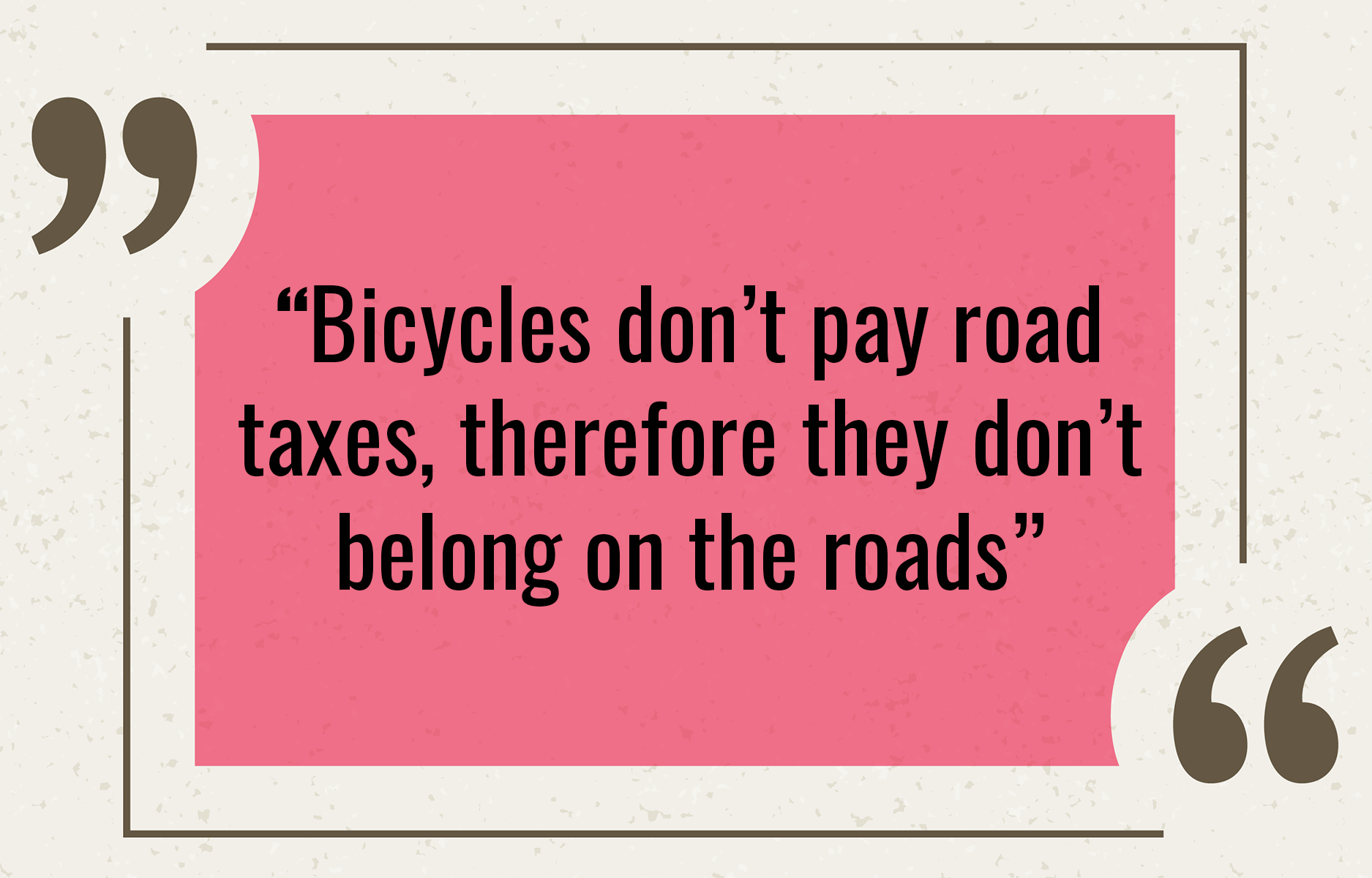
Another common argument we hear in the bike lane debate is that “Bicycles don’t pay road taxes and therefore do not belong on the road”. That is correct; bicycles do not pay road taxes, nor do cars. The people who operate them do! Pedestrians don’t pay sidewalk taxes either, yet sidewalks exist for their safety. It's the same principle.
Limited Space:
In densely populated urban areas such as New York or San Francisco, space for bike lanes on the street may be limited as parking spots and roads are already insufficient. The implementation of Vision Zero (VZ) initiatives in NYC in 2014, aimed at eliminating traffic fatalities through 23 categories of countermeasures.
Is the Vision Zero Initiative for road user safety in NYC working? While fatalities among motorists and pedestrians have declined, indicating progress towards safer roads for these groups, research indicates mixed effectiveness.
For example, a research paper by West Virginia University suggests that cyclist fatalities have unfortunately increased. The analysis also shows that law enforcement measures, such as summonses issued by the NYPD, have not been effective in reducing traffic fatalities. To better protect cyclists, recommendations include:
- The expansion of bike lanes in densely populated areas
- Widening existing bike lanes
- Focusing law enforcement efforts on promoting bicycle helmet usage
These targeted measures could address the unique risks faced by cyclists and improve overall traffic safety in NYC.
Related Article: The Challenges of Bicycle Safety in New York City
How Should Cities Address the Bike Lane Debate?
Settling the bicycle lane debate is a complex feat. After all, there are many stakeholders involved, and officials must consider the needs of all road users. Let's explore some of the strategies that would result in positive outcomes for everyone.
Here are some of the other opposed perspectives that this group brings forth:
Integrated Urban Planning:
Develop comprehensive urban planning strategies that incorporate the needs of cyclists, pedestrians, motorists, and businesses. This can involve creating multi-modal transportation networks that allow all users safe and efficient travel.
- With apps like Carto, governments and urban planners can create visual representations based on detailed reports of city infrastructures, allowing you to get a better view of traffic patterns.
- Cities like Copenhagen and Amsterdam have successfully implemented bike-friendly infrastructure by analyzing roadway traffic patterns to identify high-demand areas for cycling.
By studying where cyclists travel most frequently, city officials can prioritize allocating resources to create safe and convenient bike lanes in key corridors.
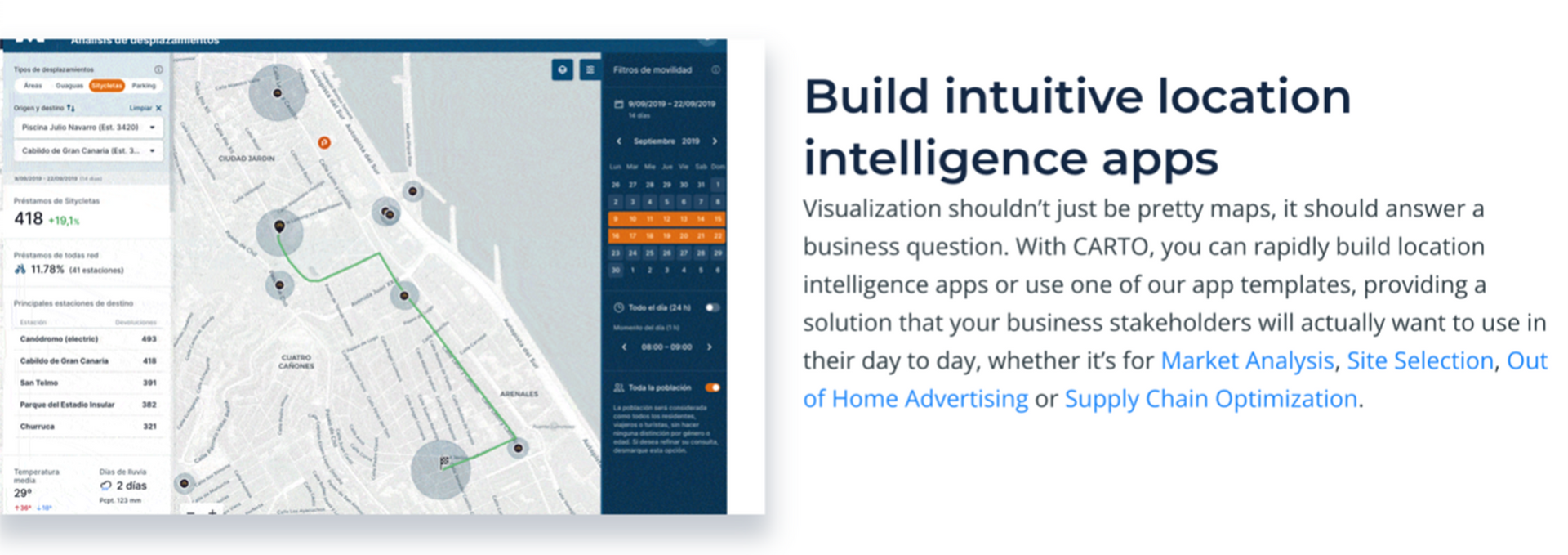
Improved Bike Lane Design:
Invest in the design and implementation of protected bike lanes that physically separate bicycle use from motor vehicle traffic. This can help reduce accidents and make cycling a more appealing option for a wider range of people.
Dynamic Space Allocation:
Implement dynamic lane usage policies where certain lanes are allocated as bike lanes during peak cycling hours and revert to vehicle lanes during off-peak times. This approach can help balance the needs of cyclists and motorists based on demand.
Enhanced Road-Sharing Education:
Launch educational campaigns targeting both motorists and cyclists to promote road-sharing etiquette and awareness. This includes understanding and respecting each other's space and rights on the road.
Funding and Infrastructure Investment:
Explore diversified funding models for cycling infrastructure, including public-private partnerships, to support the development and maintenance of bike lanes and related facilities.
Traffic Flow Optimization:
Utilize advanced traffic management systems to optimize traffic flow for all modes of transportation. This can include smart traffic signals that adapt to real-time traffic conditions, reducing congestion for motorists while improving safety for cyclists and pedestrians.
Reviewing Accident data:
Research studies, such as those conducted by the CYCLANDS project (a curated collection of 30 datasets on cycling crashes from various locations worldwide) have highlighted the importance of analyzing accident data to identify hotspots for bicycle-related crashes.
By pinpointing areas with high rates of accidents, city officials can implement targeted safety improvements, such as installing protective barriers or redesigning intersections, to reduce the risk of collisions and injuries on the cycle track.
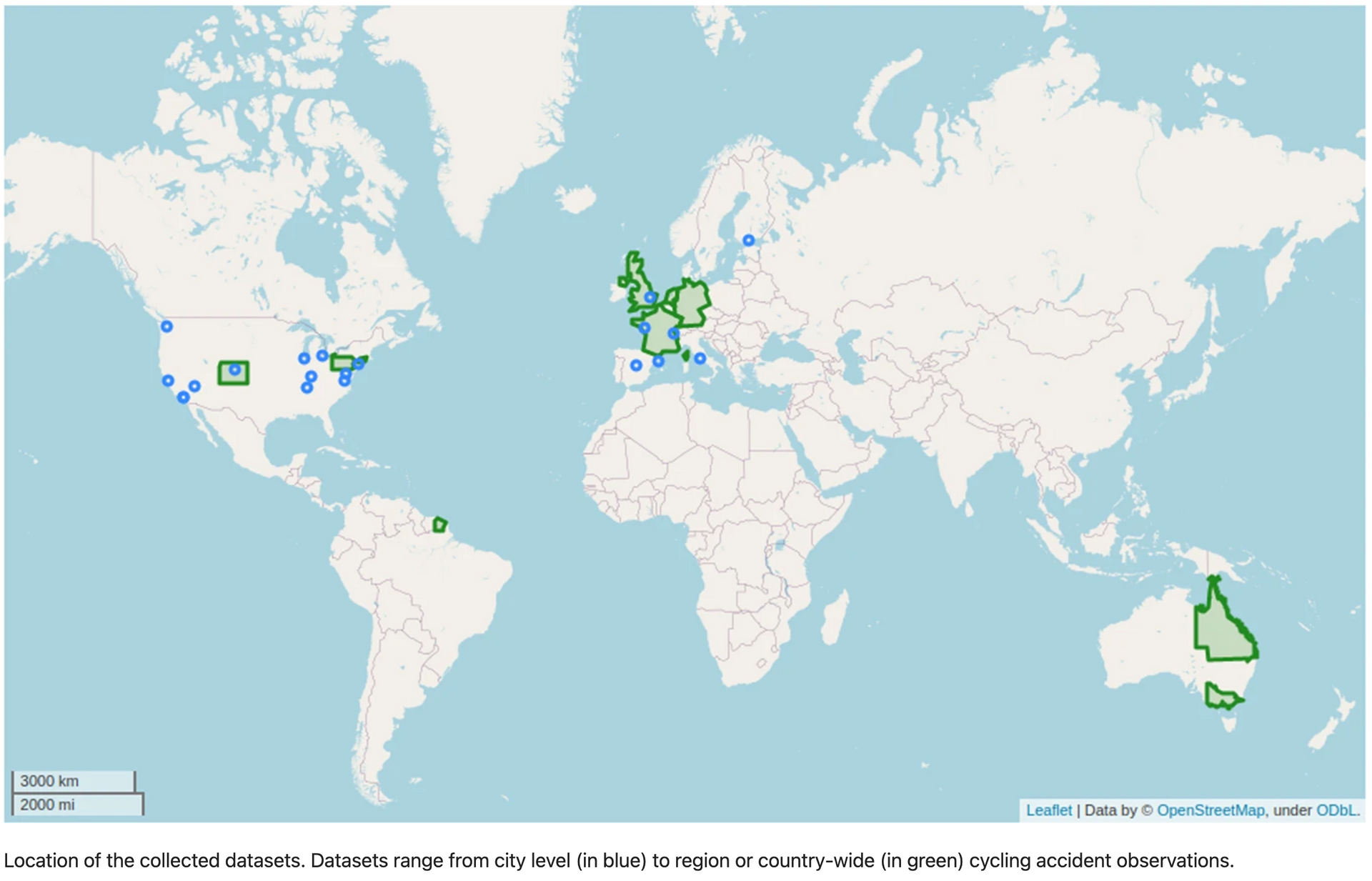
Safety and Enforcement Measures:
Increase enforcement of traffic laws for both cyclists and motorists, adherence to traffic signals, and respectful sharing of road space. This could involve targeted enforcement campaigns and increased penalties for violations.
Community Engagement and Feedback:
Regularly engage with community members, including cyclists, motorists, and local businesses, to gather feedback on bike lane policies and proposals. This can help identify specific concerns and preferences, leading to more tailored and acceptable solutions. Here are some ways communities can collect feedback:
- Online Surveys and Polls
- Public Meetings and Workshops
- Focus Groups
- Interactive Mapping Tools
- Comment Boxes in Public Spaces
- Social Media Engagement
- Mobile Apps
- Community Advisory Boards
- Door-to-Door Surveys
- Town Hall Teleconferences or Webinars
Pilot Projects and Evaluations:
Implement pilot projects for new bike lanes or changes to existing ones, followed by thorough evaluations of their impact on traffic flow, safety, and user satisfaction. This allows cities to test and refine approaches before full-scale implementation.
Promoting Alternative Transportation Modes:
Encourage the use of public transportation and other alternative modes of travel to reduce the reliance on personal vehicles, thereby decreasing traffic congestion and improving conditions for cyclists.
Is There Such a Thing as a Win-Win Situation?
Yes. Everyone deserves to choose their route and means of transportation, including public transit vehicles, personal cars, or bicycles.
- By providing a designated space for cyclists, bike lanes reduce the risk of collisions between cyclists and motor vehicles.
- Dedicated bike lanes standardize some of the behaviors of cyclists, reducing the unpredictability of their movements, which can contribute to a safer environment for all road users.
- Bike lanes help keep cyclists safer, reducing the likelihood of accidents and injuries. They also reduce the need for drivers to maneuver around cyclists.
- The addition of bike lanes improves traffic flow by providing a designated space for bicyclists, reducing the need for them to dodge cars or pedestrians. The pedestrian on the sidewalk is safer knowing the predictable path of both bicycles and motor vehicles.
One thing city officials can do today is to increase public awareness of the benefits of cycling. On top of that, people need to learn more about the importance of sharing the road, which can help reduce tensions between cyclists and motorists. Seeking input from local communities and stakeholders during the planning and implementation stages is also essential.
What Happens in Case of a Bike Lane Accident?
In the unfortunate event of a
bicycle accident, knowing what steps to take can be crucial. First, ensure everyone's safety and seek medical attention if needed. Then, document the accident scene and gather information from witnesses. Finally, contact a legal expert like
Bike Legal to protect your rights and seek fair compensation.
Crucial steps to follow after a bicycle accident:
- Prioritize Safety: Move to a safe area out of harm’s way if you can.
- Stay Calm and check for Injuries: Examine your head and helmet for signs of injury, as head trauma can be serious even without direct impact.
- Call 911 if you are injured: If you are unable to call yourself, ask a bystander or the other party to call for you.
- Remain at the Scene and File a Police Report: It's vital to remain at the accident scene, fulfilling legal obligations and providing the information needed for a police report.
- Exchange Information: Exchange contact information with other involved parties and any witnesses. include names, contact details, driver’s license, and insurance information.
- Document the Scene: Take photos capturing vehicles, damages, injuries, and road conditions.
- Avoid Extended conversations or Negotiations with the Other party or Insurance Companies: NEVER ADMIT FAULT OR PARTIAL FAULT. Contact a specialized bicycle accident attorney for legal advice. Refrain from communicating with insurance companies directly, as they might not represent your best interests.
- Preserve Evidence: Preserve all evidence in its post-accident state, including damaged clothing and your bicycle. Do not throw away or repair damaged items as they may be required as proof in a claim.
- Seek Medical Attention for Your Injuries No Matter How Minor the Crash: Regardless of the crash's severity, seek medical attention as soon as possible, as some injuries may not be immediately apparent. Follow all medical advice and keep detailed records of treatments and expenses incurred due to the accident. This documentation will be crucial for insurance claims and potential legal proceedings.
Traveling Together Toward Safer Streets
The bicycle lane debate casts a long shadow filled with tension, yet it also presents an opportunity for growth and learning. This is not just a dispute over space, but a dialogue about the kind of cities and towns we want to live in—communities that are safe, equitable, and sustainable. By championing informed discussions, embracing innovative solutions, and ultimately recognizing our shared journey on this road, we can move towards a future where every traveler reaches their destination not just intact, but connected to a greater community that respects one another.
At Bike Legal our mission is to advocate for bicycle safety
and sharing the road responsibly through education.
Our legal team is committed to supporting and representing cyclists across the United States
no matter where you ride or how you ride.
If you or someone you know has been involved in a bicycle accident,
Bike Legal is here to help!
Visit: www.bikelegalfirm.com
or call 877-BIKE LEGAL (877-245-3534)
